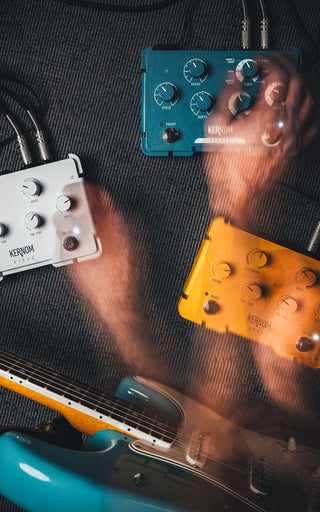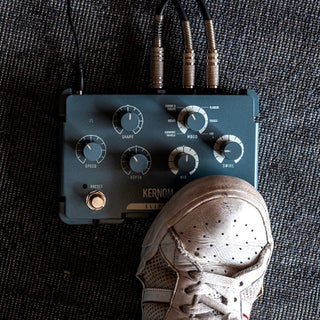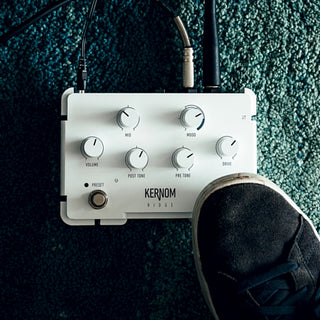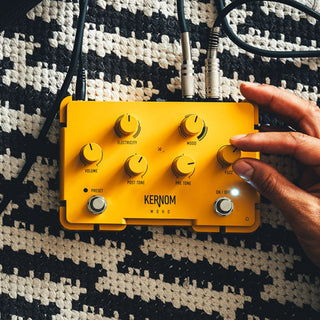

K E R N O M
NEVER STOP PLAYING

ELIPSE
MODULATION

RIDGE
OVERDRIVE

MOHO
FUZZ

ELIPSE
MODULATION

RIDGE
OVERDRIVE

MOHO
FUZZ
Rediscover the Joy of Playing
The Warmth of Analog and the Precision of Digital
Because music should first and foremost be a source of joy, our pedals let you effortlessly create the sound you’ve always dreamed of — a sound that puts a smile on your face… and makes you want to keep playing, again and again!
Our patented Analog Morphing Core® unlocks infinite sound possibilities, letting you seamlessly morph between effects to craft the perfect tone—every time.


ELIPSE
The Modulation Playground
Morph seamlessly between iconic modulation effects—from lush choruses and smooth phasers to jet-like flangers and vintage rotary sounds. Add flavour to your sound.
- All iconic modulation effects in one pedal
- Continuous morphing between effects type
- Unique swirl control to add second layer of modulation
- 128 MIDI presets + Tap Tempo & Expression control


RIDGE
The Million Moods Overdrive
From transparent clean boosts to thick, saturated overdrives and fuzzy, vintage tones, RIDGE gives you a world of drive in one pedal.
- Dial in any drive sound—from clean boost to high-gain
- Continuous morphing between clipping styles
- Advanced EQ section for perfect tone sculpting
- 128 MIDI presets + Expression control


MOHO
The Fuzz Workstation
A fuzz pedal like no other—seamlessly explore the history of fuzz, from vintage velcro tones to modern ring-modulated madness.
- Endless fuzz possibilities—from classic to experimental
- Analog warmth with real-time digital control
- Built-in Octaver & Ring Modulator for wild textures
- 128 MIDI presets + Expression control
PAUL DAVIDS
"I cannot personally see if you just look at the tones how there are any compromises with this pedal to be honest."
PAUL DAVIDS
PAUL DAVIDS
"I cannot personally see if you just look at the tones how there are any compromises with this pedal to be honest."
LIVINGROOM
"There are no tradeoffs, no compromises with sound despite the functionality and the versatility (...)"
RIFFS BEARDS & GEAR
"The MOOD knob is where all the craziness happens", "This pedal is pretty wild, real talk"
WATCH MORE
Check out our YouTube playlist for a compilation of all the videos about us.


Sculpt your sound & Never Stop Playing!
Why Choose Kernom?
Unlock limitless creativity with our products—designed to give you full sonic control like no other. Seamlessly morph between iconic analog tones with our patented Analog Morphing Core®.
Built for the stage, studio, and endless sonic exploration.




